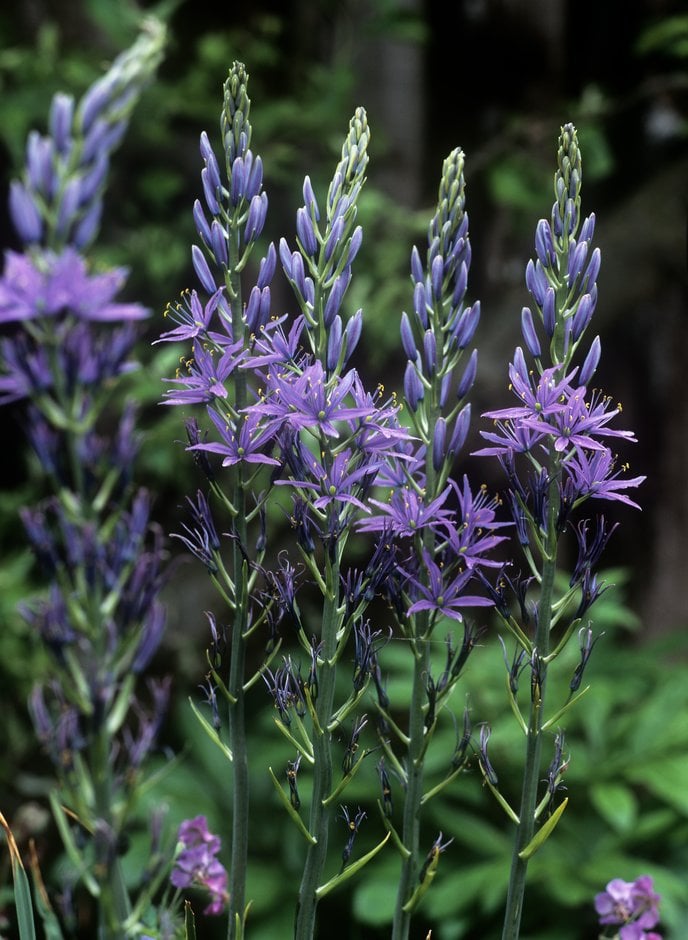Camassia leichtlinii subsp. suksdorfii Caerulea Group
camass Caerulea Group
A group of tall, clump-forming bulbous perennials with long, linear leaves and star-shaped blue flowers in racemes appearing on upright stems in late spring
Synonyms
Camassia leichtlinii 'Caerulea'Camassia leichtlinii Caerulea Group
see moreCamassia caeruleum
Size
Ultimate height
1–1.5 metresTime to ultimate height
2–5 yearsUltimate spread
0.1–0.5 metresGrowing conditions
Moisture
Moist but well–drained, Well–drainedpH
Acid, Alkaline, NeutralColour & scent
| Stem | Flower | Foliage | Fruit | |
| Spring | Blue | Green | ||
|---|---|---|---|---|
| Summer | Green | |||
| Autumn | ||||
| Winter |
Position
- Full sun
- Partial shade
Aspect
South–facing or East–facing or West–facing
Exposure
Exposed or Sheltered Hardiness
H4Botanical details
- Family
- Asparagaceae
- Native to GB / Ireland
- No
- Foliage
- Deciduous
- Habit
- Clump forming, Columnar upright
- Potentially harmful
- Ornamental bulbs - not to be eaten. Wear gloves and other protective equipment when handling. Pets: Ornamental bulbs - not to be eaten - see the HTA guide to potentially harmful plants for further information and useful contact numbers
- Genus
Camassia are bulbous perennials with narrow, channelled leaves and erect racemes of star-shaped violet-blue or creamy-white flowers in early summer
- Name status
Accepted
- Plant range
- W North America
How to grow
Cultivation
Grow in moist but well-drained, humus-rich, fertile soil. Intolerant of waterlogging and may need some protection from frosts in colder areas. May have the potential to become a nuisance due to prolific self-seeding if not managed well This plant was part of the RHS Camassia (quamash) trial 2024-2026 https://www.rhs.org.uk/plants/trials-awards/ongoing-plant-trials/camassia
Propagation
Propagate by seed sown in pots in a cold frame as soon as seed is ripe. Remove offsets when dormant in winter
Suggested planting locations and garden types
- Wildflower meadow
- Coastal
- Cottage and informal garden
- Prairie planting
- Banks and slopes
- Flower borders and beds
Pruning
Cut back faded flower spike
Pests
Generally pest-free
Diseases
Generally disease-free
Get involved
The Royal Horticultural Society is the UK’s leading gardening charity. We aim to enrich everyone’s life through plants, and make the UK a greener and more beautiful place.
